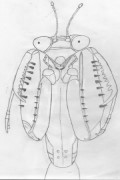The above is also really close to my definition. The key parameters are fun, not hunting, and not keeping score. It does allow for friendly banter and challenges such as, "Can you hit that tall green onion about fifty yards away?" Targets with feedback (sound, movement, and/or change in visual status) are also key. I use everything from metal spinners to clay pigeons to Necco wafers to steel gongs as targets. I do tend to use .22 Short or .22 LR for my plinking as I enjoy less recoil, quieter report, and lower cost.





 Reply With Quote
Reply With Quote



